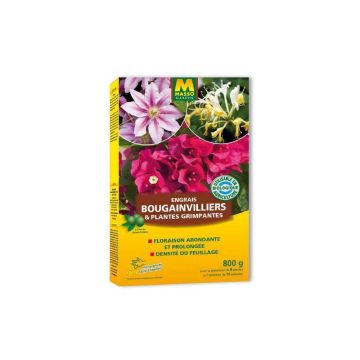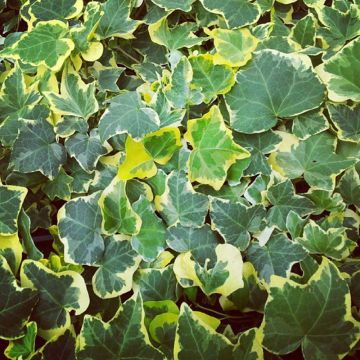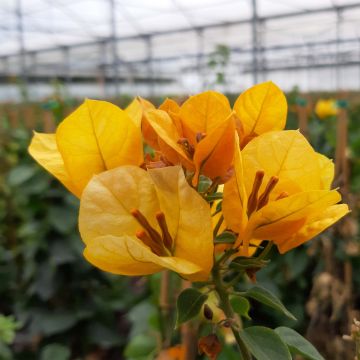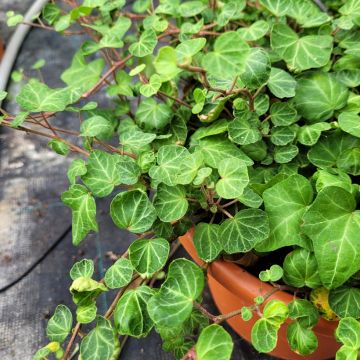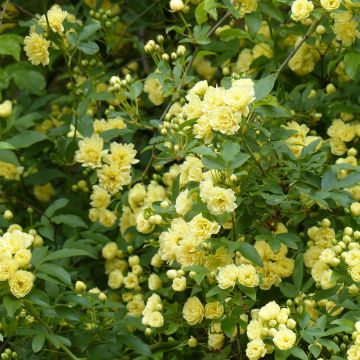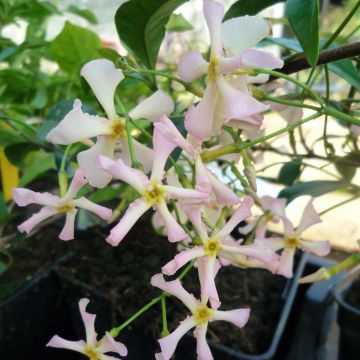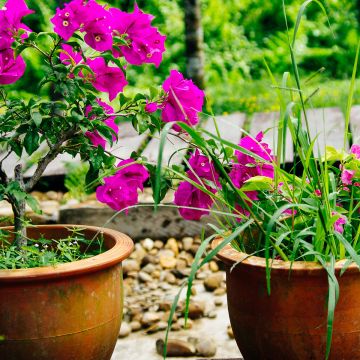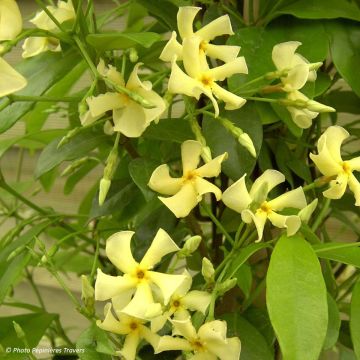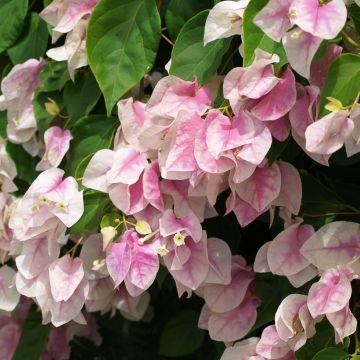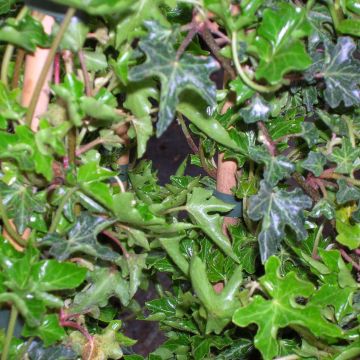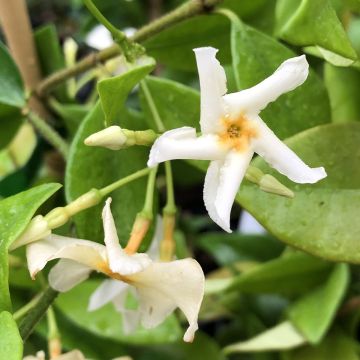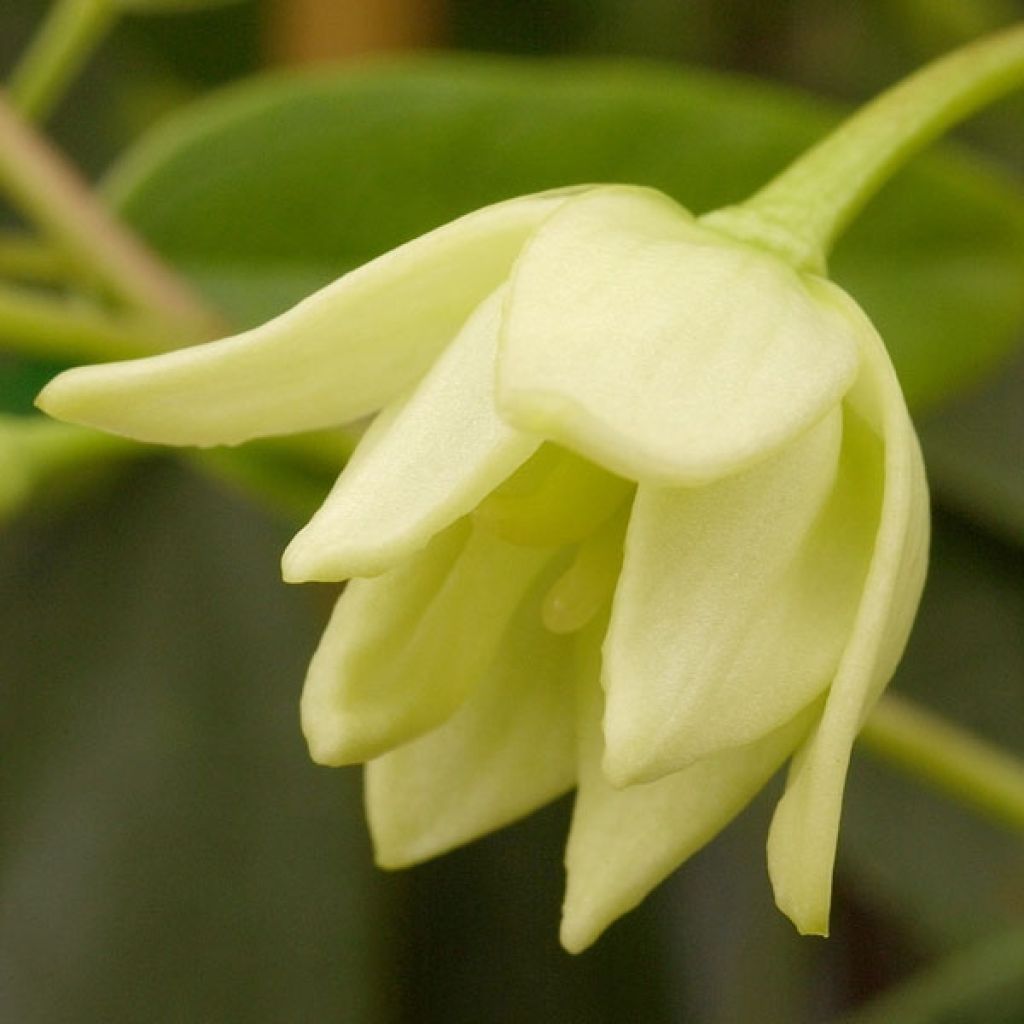

Holboellia latifolia - Broad-leaved Sausage Vine
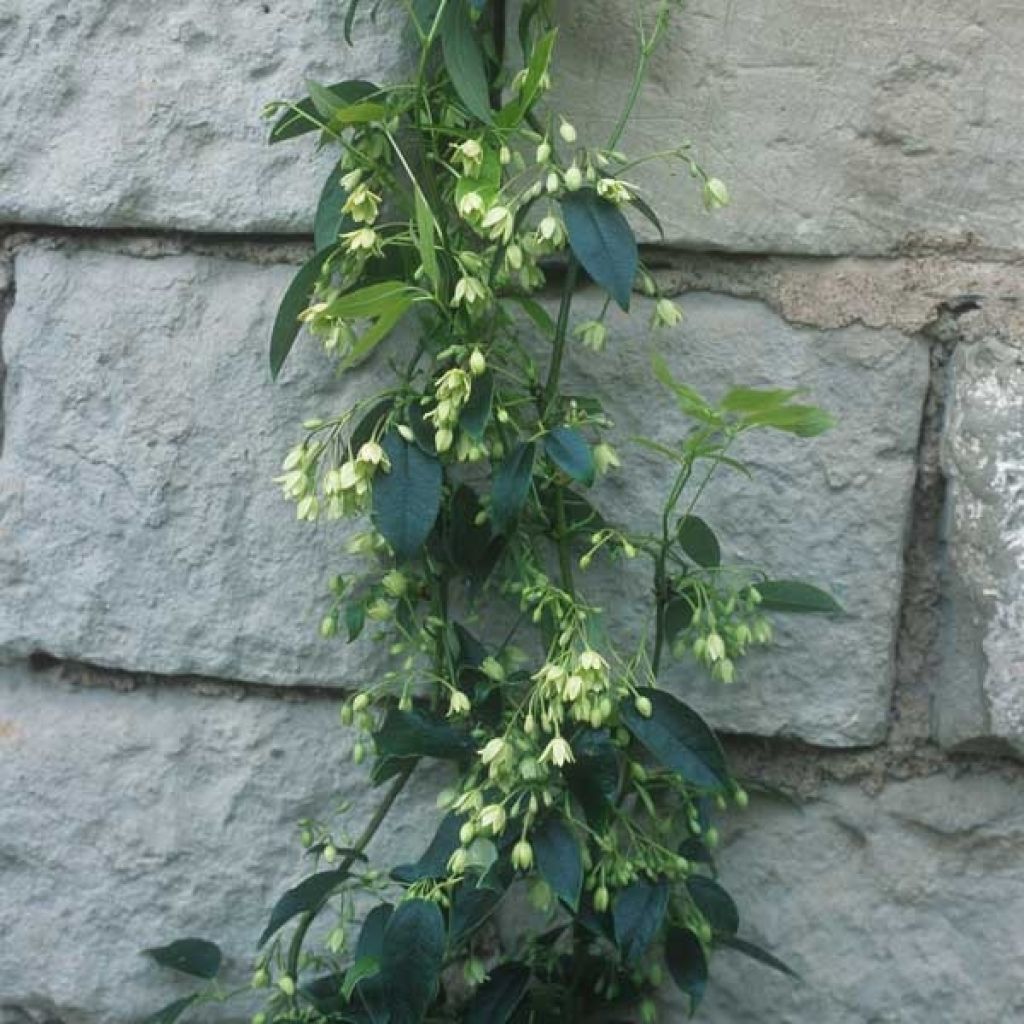

Holboellia latifolia - Broad-leaved Sausage Vine
Holboellia latifolia - Broad-leaved Sausage Vine
Holboellia latifolia
Broad-leaved Sausage Vine
Plant received in good condition and planted immediately, hoping for a successful growth by autumn.
Jean-Philippe, 23/09/2021
This plant carries a 6 months recovery warranty
More information
We guarantee the quality of our plants for a full growing cycle, and will replace at our expense any plant that fails to recover under normal climatic and planting conditions.
From €5.90 for pickup delivery and €6.90 for home delivery
Express home delivery from €8.90.

Does this plant fit my garden?
Set up your Plantfit profile →
Description
Holboellia latifolia is a climbing plant native to the Himalayas. This plant has a fairly rapid growth rate and can reach a height of up to 5m (16ft).
In March, Holboellia develops monoecious flowers, meaning they have both male and female parts. These small flowers, measuring 0.5 to 2cm (0 to 1in) in length, are grouped together in clusters that are 6 to 12cm (2 to 5in) wide. The male flowers are greenish-white, while the female flowers are purplish-pink in colour. They are fragrant.
In autumn, elongated fruits measuring 4 to 10cm (2 to 4in) in length appear. They are red to purple in colour. The evergreen leaves of Holboellia, also known as the Broad-leaved Sausage Vine, are compound and composed of three to nine leaflets. They have a decorative and dark green colour. The palmate leaves measure 7 to 15cm (3 to 6in) in length.
With its climbing habit, Large-leaved Holboellia thrives when grown in isolation. It can be used to adorn old walls and can be trained on a support. It can be found in mixed forests and along riverbanks. It is a vigorous plant, but it should be protected from severe frost.
Report an error about the product description
Holboellia latifolia - Broad-leaved Sausage Vine in pictures
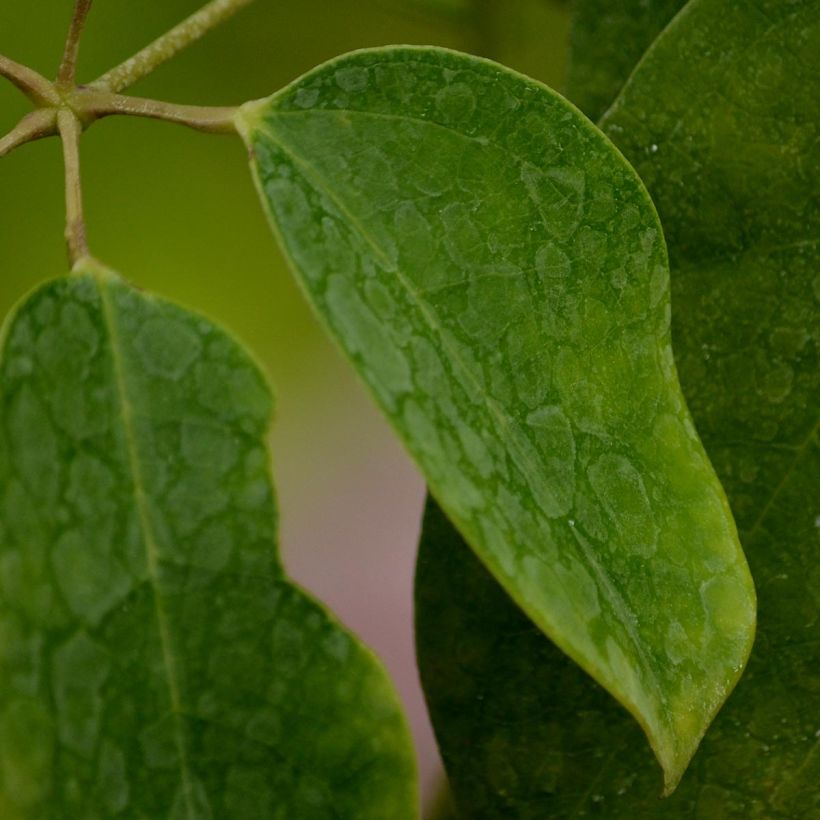

Plant habit
Flowering
Foliage
Botanical data
Holboellia
latifolia
Lardizabalaceae
Broad-leaved Sausage Vine
China
Planting and care
Place the Holboellia in a sunny or partially shaded location, sheltered from cold winds. Plant it in a partially fertile, humus-rich and well-drained soil. This is a plant that can be planted all year round, except during frost. Strong frosts should be avoided. Carry out pruning every year in spring, after flowering. The aim is to limit the growth. If necessary, rejuvenation pruning can be done, which involves cutting back the old wood to promote the growth of young shoots. This rejuvenation pruning should be done gradually and not at once, and it is not necessary to do it every year.
Planting period
Intended location
Care
-
, onOrder confirmed
Reply from on Promesse de fleurs
Evergreen climbers
Haven't found what you were looking for?
Hardiness is the lowest winter temperature a plant can endure without suffering serious damage or even dying. However, hardiness is affected by location (a sheltered area, such as a patio), protection (winter cover) and soil type (hardiness is improved by well-drained soil).

Photo Sharing Terms & Conditions
In order to encourage gardeners to interact and share their experiences, Promesse de fleurs offers various media enabling content to be uploaded onto its Site - in particular via the ‘Photo sharing’ module.
The User agrees to refrain from:
- Posting any content that is illegal, prejudicial, insulting, racist, inciteful to hatred, revisionist, contrary to public decency, that infringes on privacy or on the privacy rights of third parties, in particular the publicity rights of persons and goods, intellectual property rights, or the right to privacy.
- Submitting content on behalf of a third party;
- Impersonate the identity of a third party and/or publish any personal information about a third party;
In general, the User undertakes to refrain from any unethical behaviour.
All Content (in particular text, comments, files, images, photos, videos, creative works, etc.), which may be subject to property or intellectual property rights, image or other private rights, shall remain the property of the User, subject to the limited rights granted by the terms of the licence granted by Promesse de fleurs as stated below. Users are at liberty to publish or not to publish such Content on the Site, notably via the ‘Photo Sharing’ facility, and accept that this Content shall be made public and freely accessible, notably on the Internet.
Users further acknowledge, undertake to have ,and guarantee that they hold all necessary rights and permissions to publish such material on the Site, in particular with regard to the legislation in force pertaining to any privacy, property, intellectual property, image, or contractual rights, or rights of any other nature. By publishing such Content on the Site, Users acknowledge accepting full liability as publishers of the Content within the meaning of the law, and grant Promesse de fleurs, free of charge, an inclusive, worldwide licence for the said Content for the entire duration of its publication, including all reproduction, representation, up/downloading, displaying, performing, transmission, and storage rights.
Users also grant permission for their name to be linked to the Content and accept that this link may not always be made available.
By engaging in posting material, Users consent to their Content becoming automatically accessible on the Internet, in particular on other sites and/or blogs and/or web pages of the Promesse de fleurs site, including in particular social pages and the Promesse de fleurs catalogue.
Users may secure the removal of entrusted content free of charge by issuing a simple request via our contact form.
The flowering period indicated on our website applies to countries and regions located in USDA zone 8 (France, the United Kingdom, Ireland, the Netherlands, etc.)
It will vary according to where you live:
- In zones 9 to 10 (Italy, Spain, Greece, etc.), flowering will occur about 2 to 4 weeks earlier.
- In zones 6 to 7 (Germany, Poland, Slovenia, and lower mountainous regions), flowering will be delayed by 2 to 3 weeks.
- In zone 5 (Central Europe, Scandinavia), blooming will be delayed by 3 to 5 weeks.
In temperate climates, pruning of spring-flowering shrubs (forsythia, spireas, etc.) should be done just after flowering.
Pruning of summer-flowering shrubs (Indian Lilac, Perovskia, etc.) can be done in winter or spring.
In cold regions as well as with frost-sensitive plants, avoid pruning too early when severe frosts may still occur.
The planting period indicated on our website applies to countries and regions located in USDA zone 8 (France, United Kingdom, Ireland, Netherlands).
It will vary according to where you live:
- In Mediterranean zones (Marseille, Madrid, Milan, etc.), autumn and winter are the best planting periods.
- In continental zones (Strasbourg, Munich, Vienna, etc.), delay planting by 2 to 3 weeks in spring and bring it forward by 2 to 4 weeks in autumn.
- In mountainous regions (the Alps, Pyrenees, Carpathians, etc.), it is best to plant in late spring (May-June) or late summer (August-September).
The harvesting period indicated on our website applies to countries and regions in USDA zone 8 (France, England, Ireland, the Netherlands).
In colder areas (Scandinavia, Poland, Austria...) fruit and vegetable harvests are likely to be delayed by 3-4 weeks.
In warmer areas (Italy, Spain, Greece, etc.), harvesting will probably take place earlier, depending on weather conditions.
The sowing periods indicated on our website apply to countries and regions within USDA Zone 8 (France, UK, Ireland, Netherlands).
In colder areas (Scandinavia, Poland, Austria...), delay any outdoor sowing by 3-4 weeks, or sow under glass.
In warmer climes (Italy, Spain, Greece, etc.), bring outdoor sowing forward by a few weeks.



































